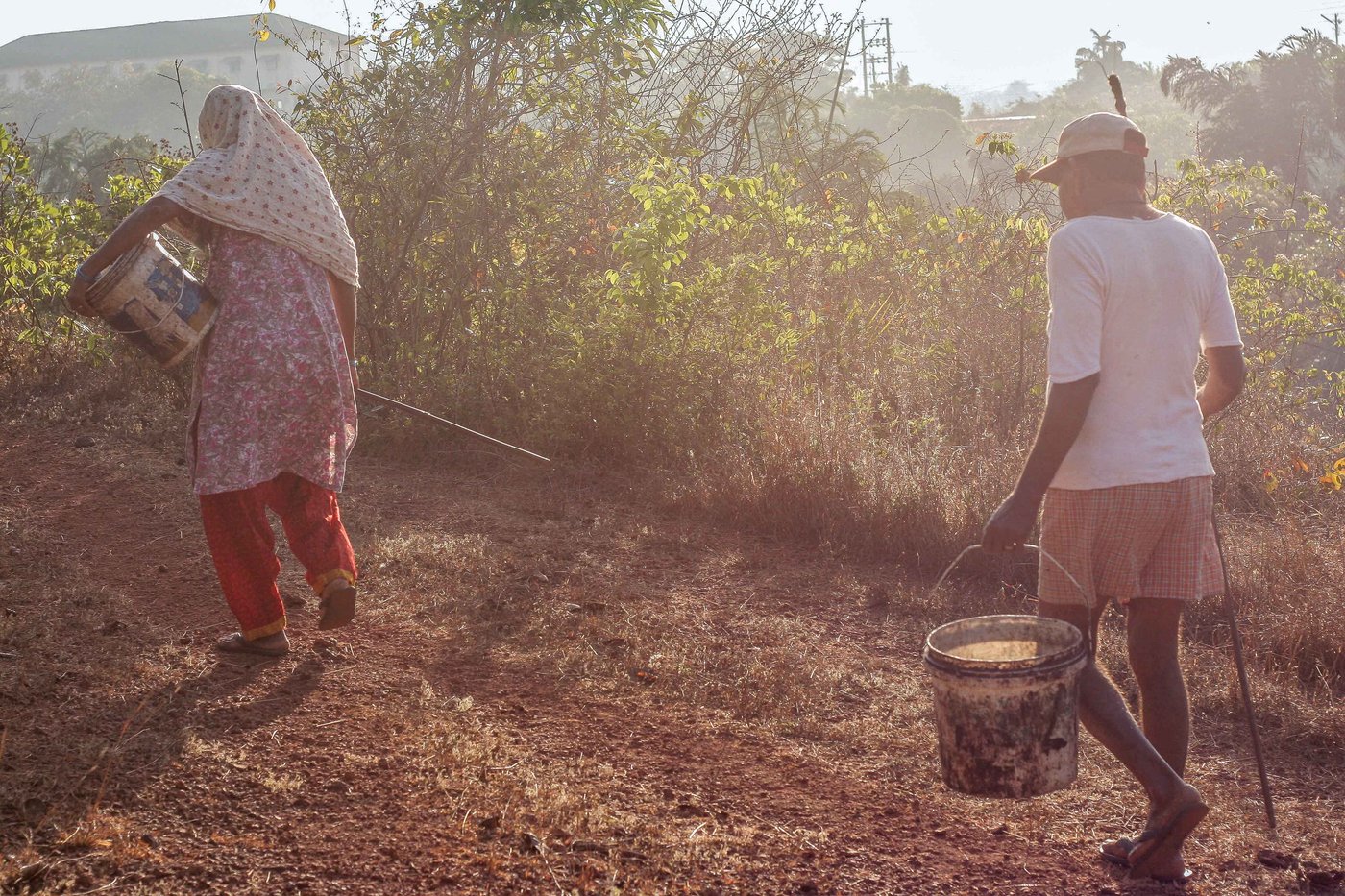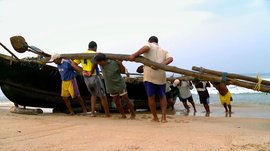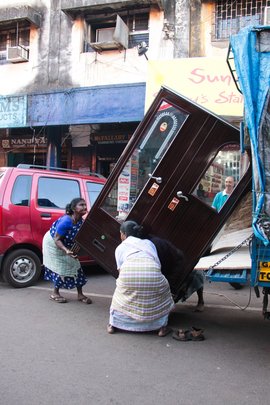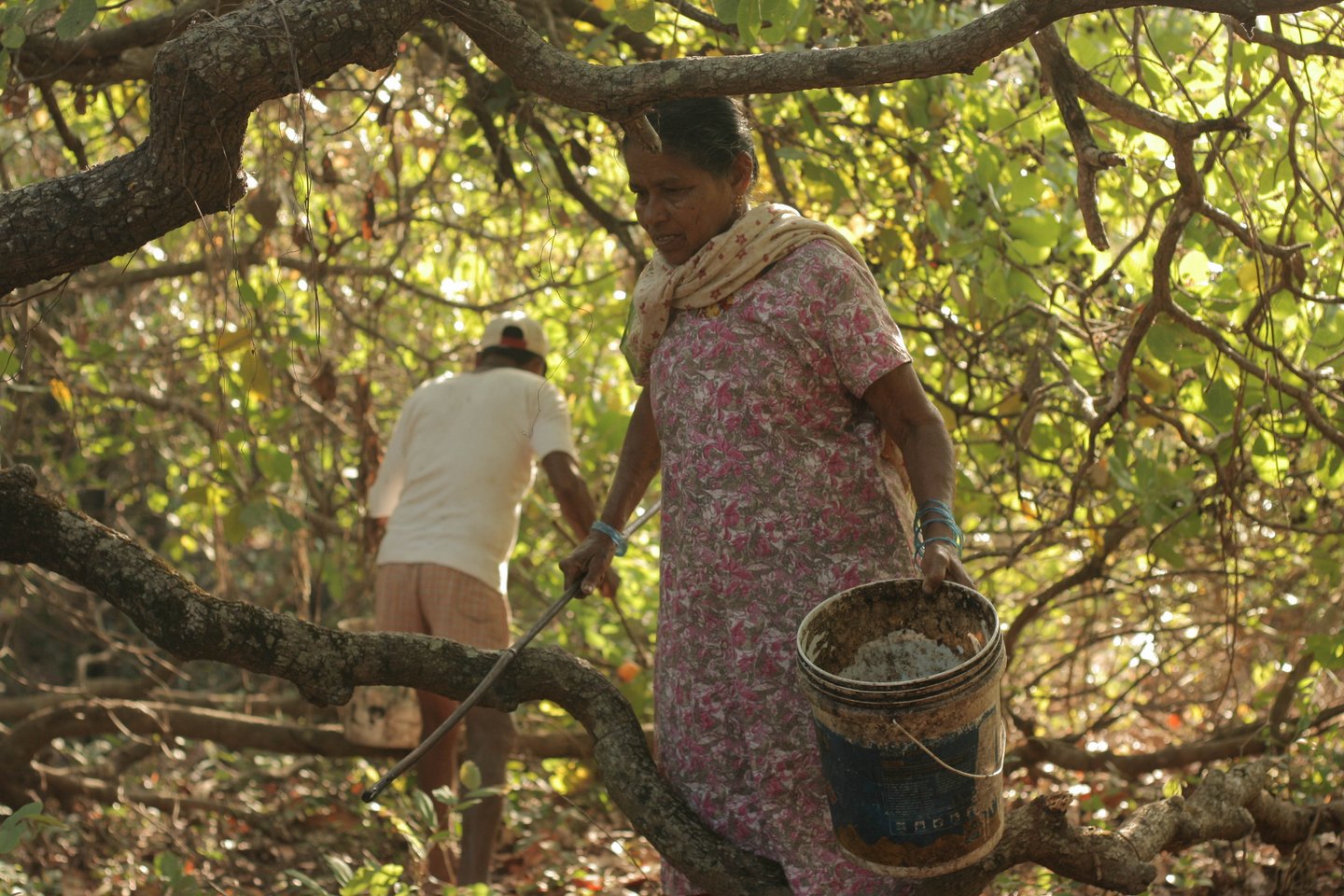
Inacina Fernandes, 72, and Luis Fernandes, 74, are feni distillers from Harmal (Arambol) in Pernem taluka, North Goa. Their family has been running this business for three generations.
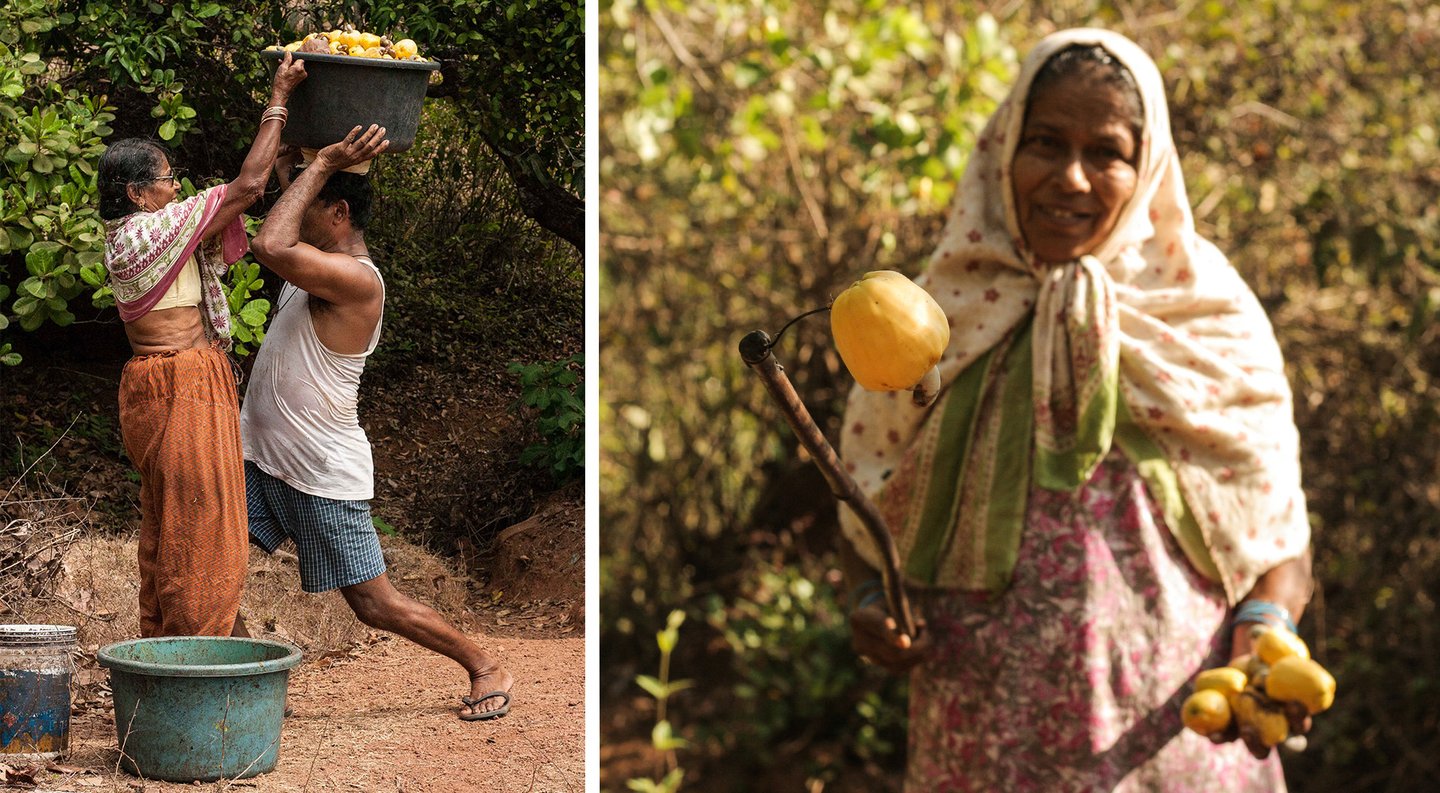
They begin collecting cashew apples early every morning from three separate plots of forestland that belong to private owners, for which they pay an annual rent of Rs. 40,000. “We don’t pluck cashews from the tree,” Inacina says. “The sting of the sap is absent from fallen fruits and therefore best suited for the production of feni. ” Bostiao is the only one of the Fernandes’ five sons who works in the family distillery. He joins his parents later in the morning to carry back the fruits that they gather.

A thatched hut, around two kilometres from their home, is the family’s hub of feni -distilling activities. The hut is put together by the Fernandes’ in December every year and dismantled by the end of May, before the monsoon season. The family also sets up all the distilling machinery themselves. It remains covered in tarpaulin after they move out.

The hut is a second home for Inacina and Luis. They live here for four months every year for ease of operations – from collecting the fruit to tending to the wood fire overnight. “There are many wild animals in the forest; we often hear their cries at night, but we are used to it now,” Inacina says.
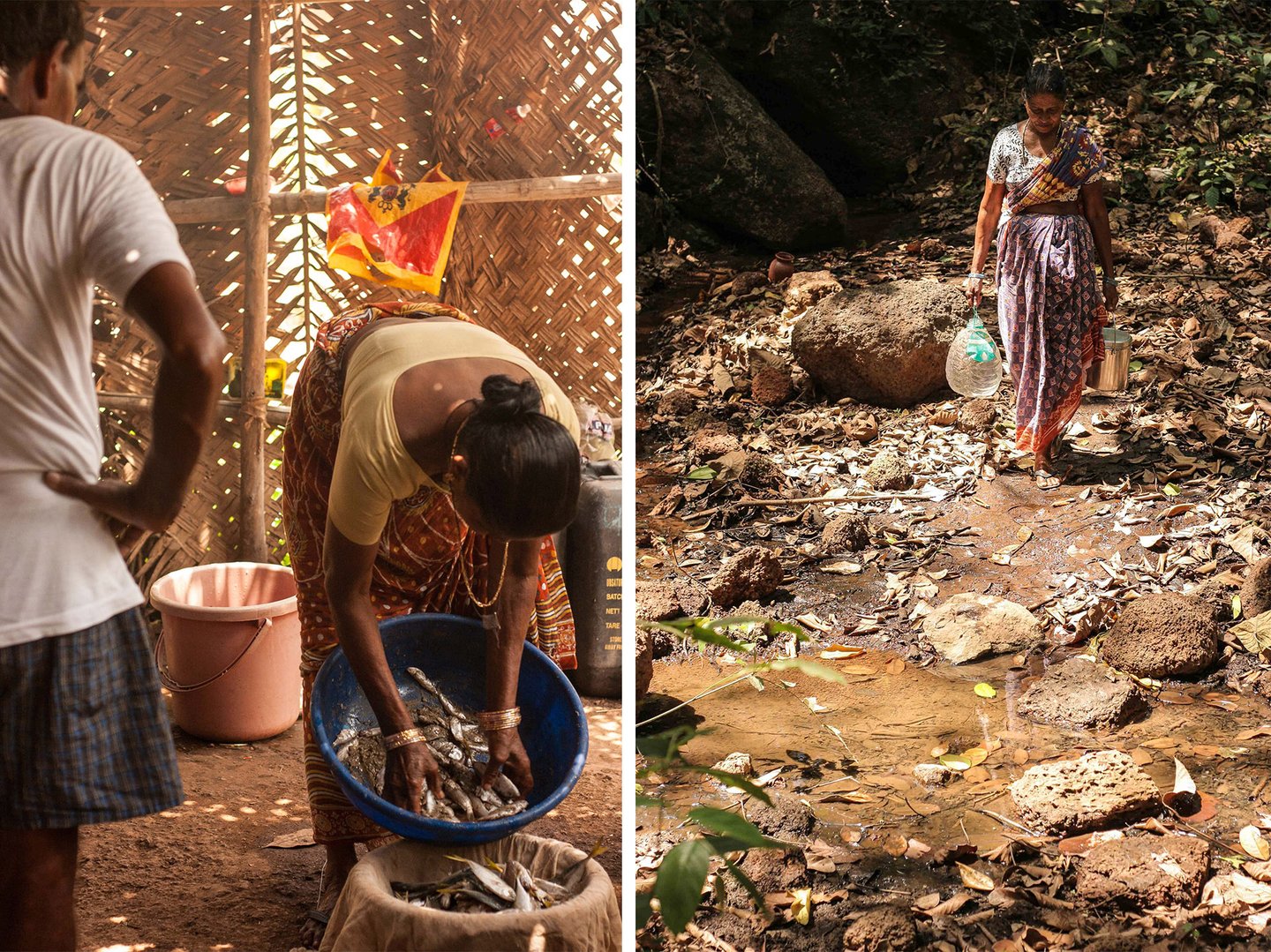
The Fernandes’ are also traditional fisherfolk. From the end of the monsoon to January, Bostiao goes on the boats. From January to May, fishing is handled by labourers they hire. When they are busy with the cashew crop, Inacina and Luis receive a daily share of fresh catch from the labourers. If the catch is generous, Inacina sells some at the local fish market. Right: Late in the morning, the couple goes to a spring nearby to freshen up and carry back the day’s water supply in plastic bottles and a steel tin.
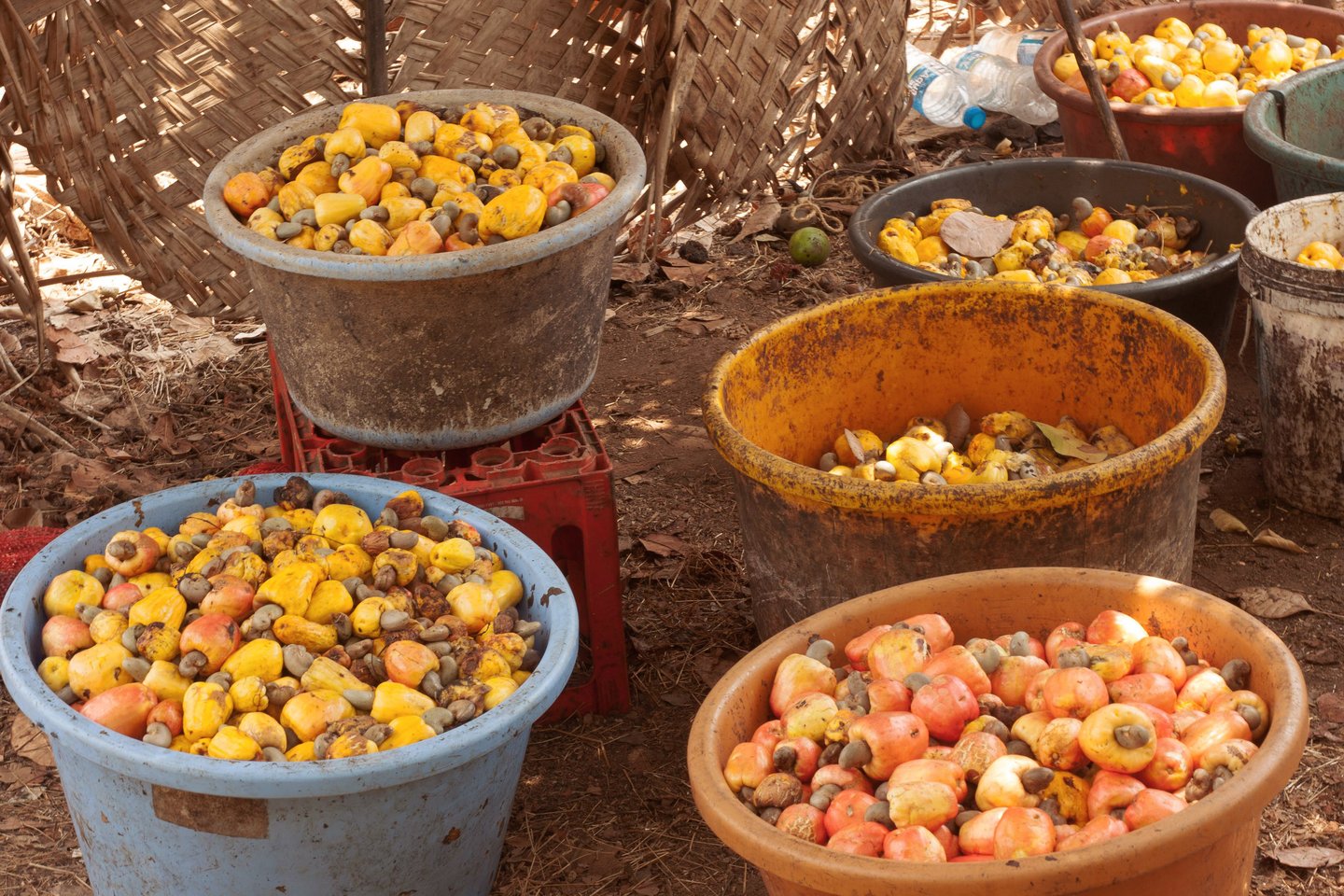
The morning’s collection: during peak crop output, Inacina and Luis go to the forest twice a day to gather fruit. “Many relatives and friends come by, but during high season we don’t have time to chat with anybody,” says Inacina.
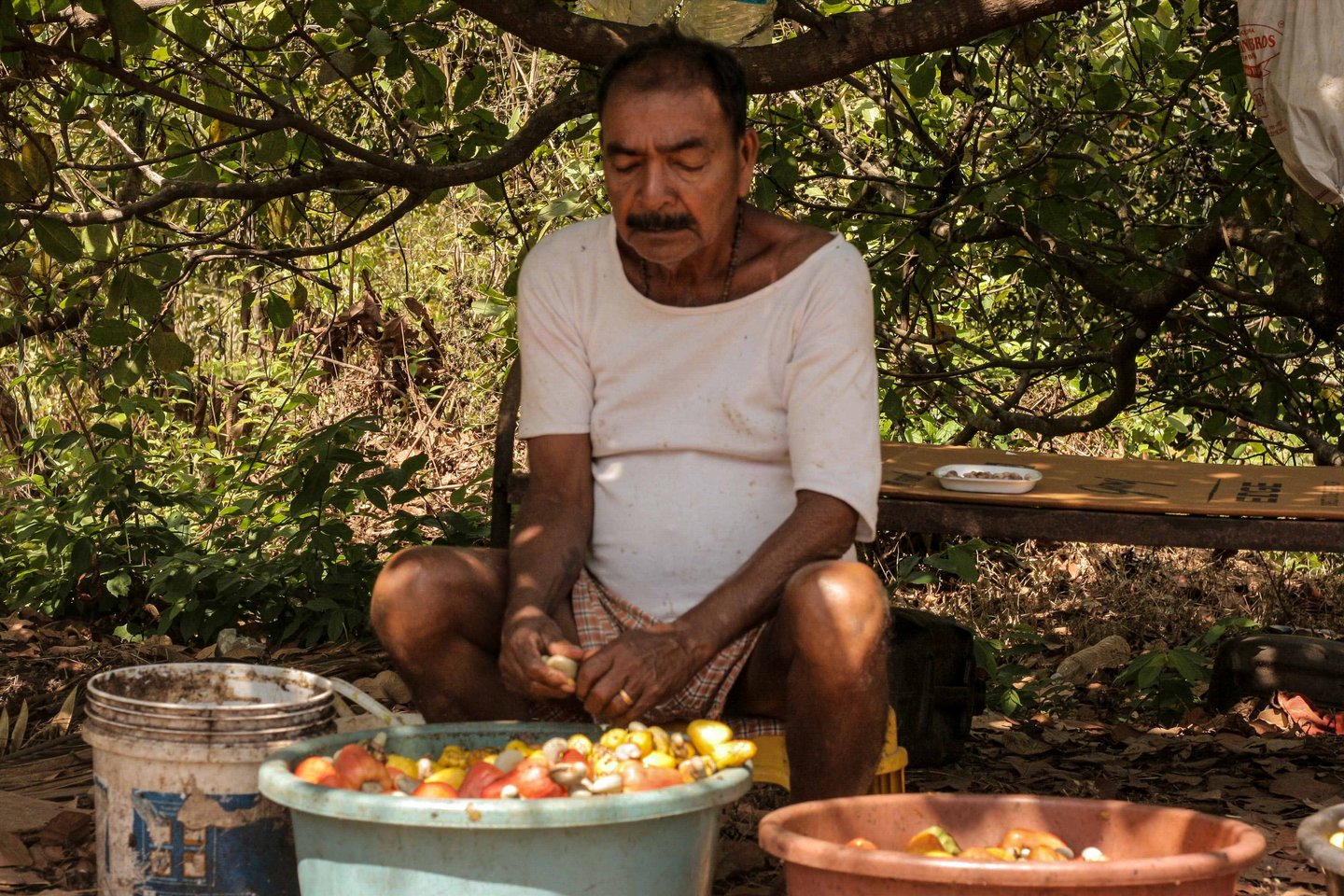
The cashew seed is in high demand locally as well as for export. The nuts are sold to wholesalers in Goa at prices ranging from Rs. 110-160 per kilo. The high end of the price usually prevails in the beginning and at the end of the season, when supply is relatively low. The Fernandes’ pay the land owner for all the seeds gathered during that season – he gets the high end-of-season rate for the whole season’s stock.
There is usually a 10 to 15% profit margin for the Fernandes family. “We are doing well by the grace of God and by the prayers of my deceased mother,” says Luis. In 2016, they collected 200 kilos of seeds. The family has not yet totaled this season’s numbers, they are busy wrapping up work before the monsoon begins. But the crop was better this year, so the total might go up.
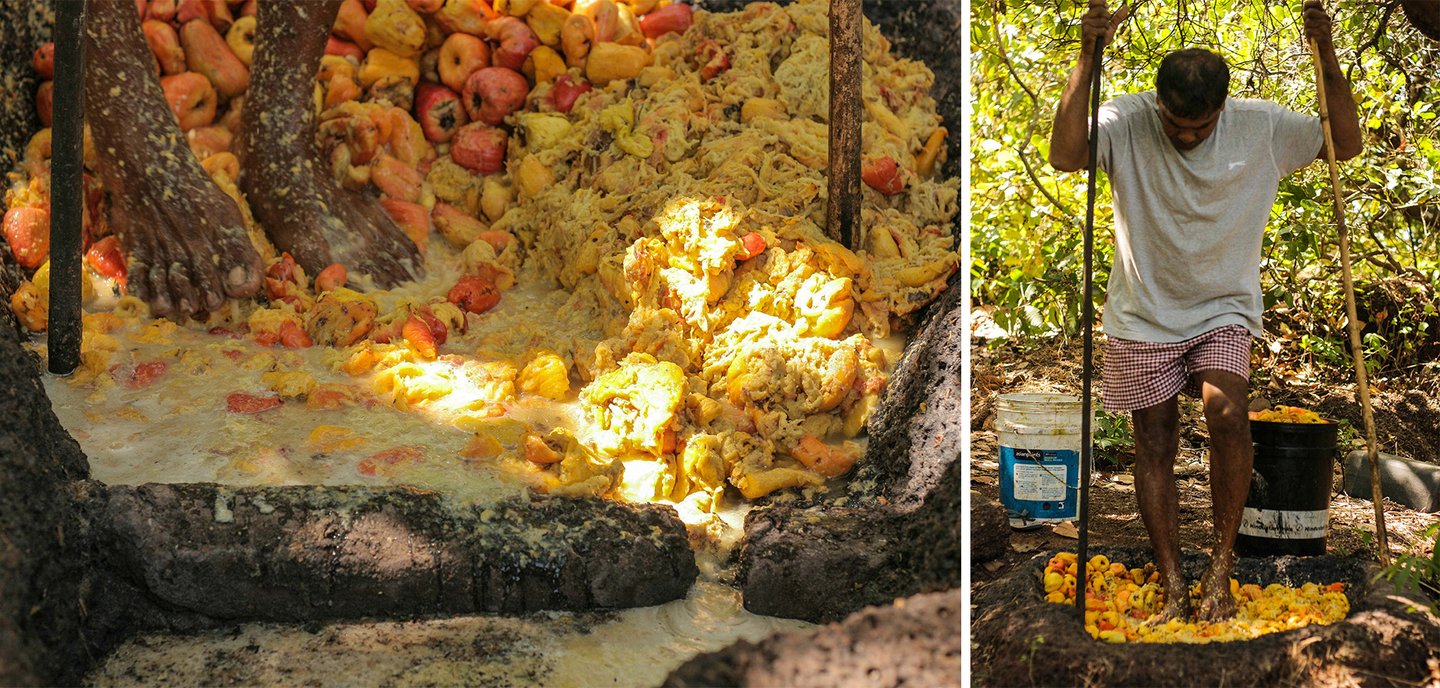
The first step in distilling feni is to extract juice from the fruit. This is traditionally done by stomping on the fruit. The Fernandes’ have installed a crushing machine three years ago, but at the beginning of the season when the daily collections are modest, Bostiao prefers using his feet.

The second press produces the refreshing neero . It has a short life of about 12 hours, and is consumed by the family or distributed among friends.

The first press is stored in plastic barrels and left to ferment naturally for 48 hours. It is then poured into large earthen pots (though even copper pots are used nowadays) and kept over a slow fire overnight. Right: It is important to have a secure lid that retains the heat. A cloth wrapped around a heavy stone with wet clay does the job.
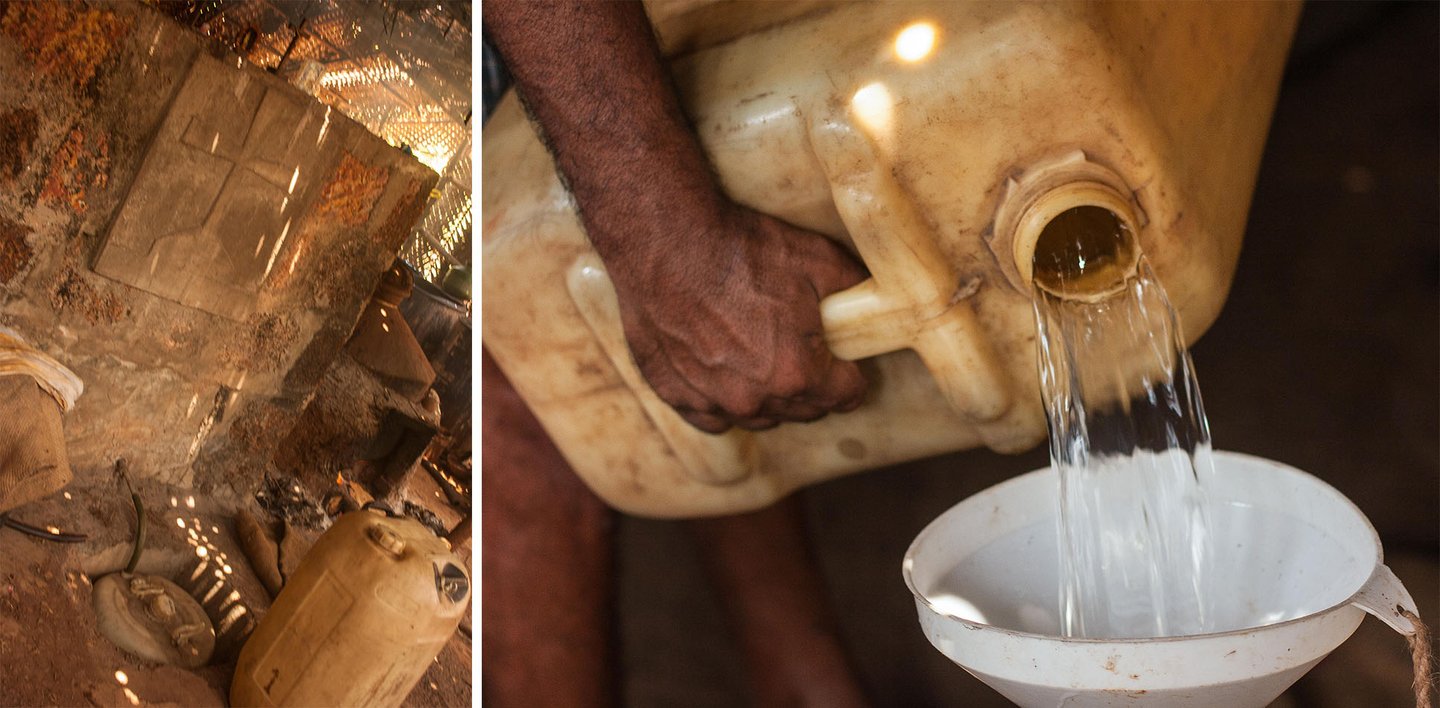
A coil carries the distillate to a large container below ground level. This coil is immersed in cold water to condense the distillate. The first distillation yields urak, a mild alcoholic drink. It has a shelf life of about four months, is sold for around Rs. 100 a litre, and is in much demand among local tipplers. The urak is then poured into the next pot along with some more of the fermented first press. Left over a slow fire again, the feni is collected in yet another large plastic container.
Right: This year, because the cashew apple crop was good, the family expects to produce 1,000 litres of feni . It is sold for Rs. 1,200 for a kowso (an old way of measurement; one kowso is 20 bottles of approximately 750 ml each). The Fernandes family does not sell the product to stores and taverns or to larger distillers. Inacina, Luis and Bostiao have a dedicated clientele of Goan families who stock up on their annual supply before the monsoon.
